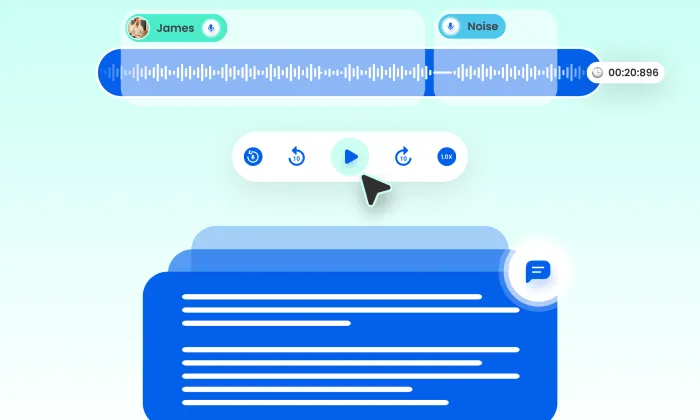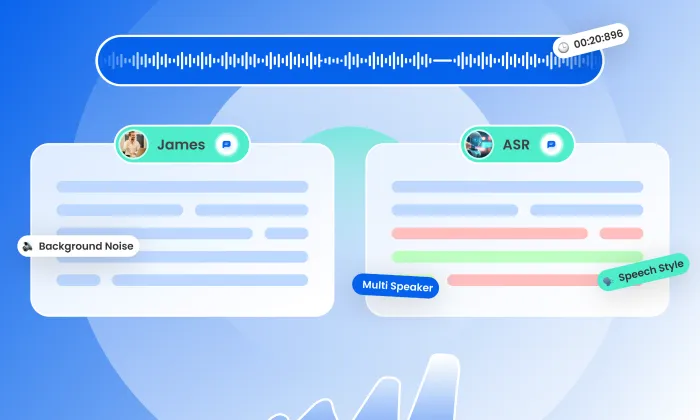What sample rate and bit depth are used in the doctor dictations dataset ?
Audio Processing
Healthcare
Speech AI
For doctor dictation datasets, maintaining high-quality audio is crucial for effective medical Automated Speech Recognition (ASR) and Natural Language Processing (NLP). The industry-standard specifications for these datasets include a sample rate of 16 kHz and a bit depth of 16 bits. This configuration ensures a balance between clarity and file size, making it ideal for clinical dictations where precise understanding of terminology is essential.
However, when environments present challenges like background noise, FutureBeeAI offers a higher fidelity option with a 48 kHz sample rate and 24-bit depth. This setup captures finer audio details, enhancing the accuracy of ASR systems in detecting complex medical terms and nuances in speech.
Why Sample Rate and Bit Depth Matter in Clinical Dictation
Sample Rate: The sample rate determines how frequently audio samples are taken per second. A 16 kHz rate means 16,000 samples per second, which is sufficient for capturing the nuances of human speech in clinical settings. This ensures that spoken words are clearly transcribed, crucial for accurate doctor dictations.
Bit Depth: This refers to the number of bits used to represent each audio sample, affecting how precisely sound levels are captured. A 16-bit depth offers 65,536 possible amplitude values, which is adequate for voice recordings. Raising the bit depth to 24 bits increases this to over 16 million values, improving the signal-to-noise ratio and minimizing distortion. This is especially beneficial in clinical environments where accurate speech details are critical.
Practical Considerations for AI Teams
- Optimizing Data Quality: Ensure audio files meet the 16 kHz/16-bit standard or higher. Variations in these specifications can significantly impact transcription accuracy and ASR system performance.
- Balancing Quality and File Size: Higher sample rates and bit depths improve audio quality but also increase file sizes, affecting storage and processing time. AI teams must balance quality requirements with data management needs.
- Addressing Speaker Variability: High-quality audio helps mitigate issues related to speaker variability (accents, speech patterns, etc.). Clear audio enables better model training, improving performance across diverse clinical settings.
Common Missteps to Avoid
- Ignoring Background Noise: Significant background noise can compromise audio quality. Recordings should occur in controlled environments to ensure minimal interference and clearer transcriptions.
- Device Inconsistencies: Variations in recording devices can lead to inconsistencies in audio quality. Standardizing equipment or documenting device specifications for each session helps maintain uniformity.
- Overlooking Metadata: Properly documenting audio specifications (sample rate, bit depth) is essential for effective data processing and regulatory compliance. Accurate metadata ensures efficient file management and system performance.
FutureBeeAI: Your Partner in High-Quality Dictation Data
At FutureBeeAI, we understand the critical role audio quality plays in medical AI applications. Our doctor dictation datasets meet industry standards and offer flexibility to meet specific needs. Whether you require standard or high-fidelity audio, our solutions ensure precision, compliance, and reliability.
For projects needing scalable, high-quality dictation data, explore what FutureBeeAI offers to elevate your AI systems.
FAQs
Q. How does sample rate and bit depth affect transcription accuracy?
A. A higher sample rate and bit depth capture more audio detail, enhancing ASR accuracy. 48 kHz/24-bit audio is ideal for detecting complex medical terminology and ensuring precise transcriptions.
Q. What challenges arise when working with lower sample rates or bit depths?
A. Lower sample rates or bit depths may compromise the clarity of complex terms and speech nuances, reducing transcription accuracy. It's crucial to meet industry standards to optimize ASR performance.
What Else Do People Ask?
Related AI Articles
Browse Matching Datasets
Acquiring high-quality AI datasets has never been easier!!!
Get in touch with our AI data expert now!








